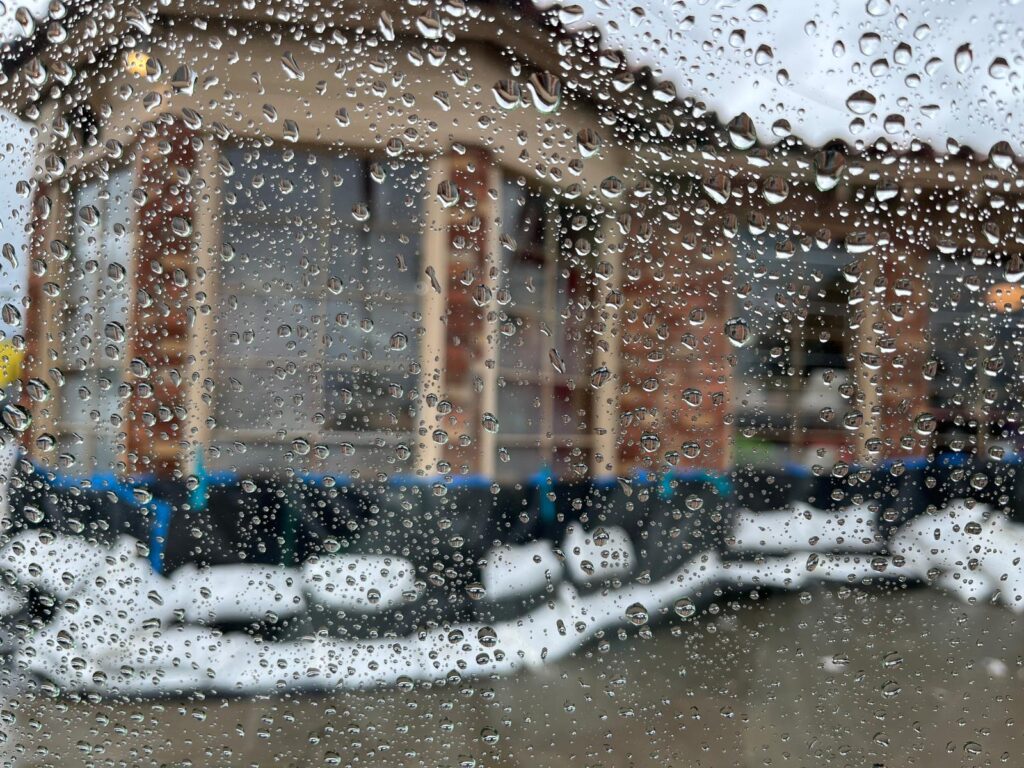
In an effort to protect Californians from the coming winter storms, Governor Gavin Newsom declared a state of emergency in California on Wednesday to support the ongoing response to recent winter storms.
The emergency proclamation supports emergency relief efforts, including authorizing the mobilization of the California National Guard to support disaster response, and directs Caltrans to request immediate assistance through the Federal Highway Administration's Emergency Relief Program to support highway repairs and other support for local response and recovery efforts.
Newsom also activated the State Operations Center to its highest level, and the state and federal governments launched the Flood Operations Center, which covers forecasting, coordinating reservoir operations and providing technical support as well as flood-fighting materials such as sandbags for local workers.
“California is mobilizing to keep people safe from the impacts of the approaching storm,” the governor said. “This state of emergency will allow the state to respond quickly as the storm develops and support local officials in their ongoing response.”
The National Weather Service is forecasting heavy rain and snow, strong winds and the possibility of additional flood threats.
The heaviest rainfall is expected Wednesday night into Thursday morning in Northern California, extending into Thursday night in Southern California. Residual flooding impacts could extend into the weekend along with additional storms lingering into next week.
In response, the state has pre-positioned equipment, rescue personnel and firefighters to support local resources across the state. Crews will be quickly mobilized in the event of mudflows, avalanches or flash floods.
The California Health and Human Services Agency (CalHHS) has engaged with local and community partners to ensure that vulnerable groups—people with disabilities, seniors, and unsheltered people—are aware of the approaching storm and have access to services should they need them.
Additionally, the Department of Social Services is prepared to work alongside local partners and the American Red Cross to establish congregate shelters, while the Department of Public Health is prepared to deploy regional staff to support hospitals and health care facilities.
The Department of Health Care Information and Access is prepared to send structural engineers to health care facilities to assess infrastructure impacts, and the Emergency Medical Services Authority is prepared to deploy Ambulance Strike Teams.
Given the risks, the state is urging people to avoid non-essential travel during the peak of the storm on Wednesday night and Thursday morning. However, if you must drive, download the QuickMap app for up-to-date information on road conditions, traffic, closures, chain monitoring and more.
In light of potential power outages, officials suggest taking inventory of items you need that rely on electricity. Plan for batteries and other alternative power sources to meet your needs if the power goes out, such as a portable charger or power bank.
Have flashlights for each household member, and determine if your home phone will work in a power outage and how long the backup battery will last.
Californians are reminded to dial 2-1-1 or 3-1-1 for help or questions. If you are experiencing a critical emergency, call 911.
Stay informed by signing up for emergency alerts, including evacuation warnings and advisories. Go to www.CalAlerts.org to sign up to receive alerts from your county officials.
Flood risk
If you are under a flood warning, find safe shelter immediately – do not walk, swim or drive through flood waters. Remember, just six inches of moving water can knock you down, and one foot of moving water can sweep away your vehicle.
Stay away from bridges over fast-moving water.
Know your medical needs and talk to your medical provider about a power-off plan for electrically powered medical devices and refrigerated medications. Know how long your medications can be stored at higher temperatures and get specific guidance for any life-critical medications.
Remember that portable backup generators produce carbon monoxide (CO), a poisonous gas. CO is an odorless, colorless gas that kills without warning. It takes the lives of hundreds of people each year and makes thousands more sick.
So, never use a generator inside your home or garage, even if the doors and windows are open, only use generators outside, more than 20 feet away from your home, doors and windows.
food storage
Remember to have enough nonperishable food and water for each member of your household for three days. Open freezers and refrigerators only when necessary. Your refrigerator can keep food cold for four hours. A full freezer will maintain the temperature for two days. Use coolers with ice if necessary. Monitor temperatures with a thermometer. Throw away food if temperatures reach 40 degrees or higher.
You may be interested in: San Mateo County activates emergency operations center

